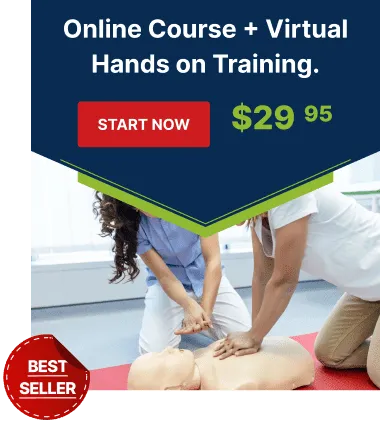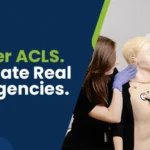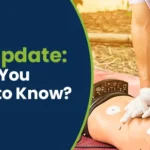Table of Contents
- Introduction
- Why Students Should Learn CPR
- How Schools Benefit from CPR Programs
- Addressing Common Misconceptions and Myths About CPR
- Long-Term Advantages of CPR Training
- Conclusion
Sudden cardiac arrest affects about 356,000 people outside hospitals in the U.S. every year. But when CPR is performed right away, survival rates can double or even triple. The problem? Many people don’t know what to do in an emergency.
Teaching CPR in schools helps change that. When more young people learn these skills, more lives can be saved. Schools are the perfect place for this training. Students, teachers, and staff spend hours together every day. Plus, when students learn CPR early, they carry that knowledge into adulthood. This builds a future generation that knows how to act in emergencies.
CPR training also teaches responsibility, leadership, and how to stay calm under pressure. These skills help in everyday life, not just in emergencies. So why should students learn CPR? And how does it make a lasting impact? Let’s explore.
Why Students Should Learn CPR
Cardiac emergencies can happen anywhere. Teaching CPR in schools prepares students to act fast at school, at home, or in public places. Beyond saving lives, CPR training also builds confidence and opens up new opportunities. Some of the most compelling reasons students should learn CPR in schools are discussed below:
- Teaches Practical Techniques – You’ll learn chest compressions, rescue breathing, and how to use an Automated External Defibrillator (AED). These skills prepare you to take action when every second matters.
- Improves Emergency Response – CPR training helps you assess medical situations and react effectively. You gain problem-solving skills that apply beyond emergencies.
- Looks Great on College and Job Applications – Many schools and employers value CPR certification. Having it on your resume can make you stand out.
- Opens Doors to Healthcare and Emergency Careers – If you’re interested in medicine, emergency response, or related fields, CPR training gives you a strong foundation.
- Builds Confidence and Responsibility – Knowing you can save a life gives you a sense of self-reliance. It also prepares you to handle real-world emergencies.
- Turns Knowledge into Action – Many people know about CPR, but few have hands-on experience. Training helps you put that knowledge to use when it truly matters.
How Schools Benefit from CPR Programs
Adding CPR training to school programs does more than check a requirement. It gives students real-life skills they can use in emergencies. Whether at school, home or in their communities, they learn how to step in and save lives.
- Makes Schools Safer: A school becomes a safer place when both students and staff know CPR. Emergency preparedness improves, and trained responders are always nearby when needed.
- Meets State and Accreditation Requirements: Many states require CPR training in schools. A structured program helps schools follow these rules while improving student safety and education.
- Builds Confidence and Leadership: Learning CPR gives students a sense of responsibility. They feel more capable of handling emergencies and helping others when it matters most.
- Fits Easily into Health or PE Classes: Authorities don’t have to change their curriculum to teach CPR in schools. It can be added to existing health or PE classes without disrupting other lessons.
- Offers Certification Opportunities: Schools that work with accredited CPR organizations can offer students official certifications. This gives students a valuable skill to include on resumes and college applications.
Addressing Common Misconceptions and Myths About CPR
CPR (Cardiopulmonary Resuscitation) is a life-saving technique that can greatly improve survival chances for someone in cardiac arrest. Yet, misinformation often stops people from stepping in. Knowing the facts can help you act with confidence when it matters most. Let’s explore some common myths and set the record straight:
“Only trained professionals should perform CPR.”
You don’t need formal certification to give CPR. Anyone can help. Hands-only CPR. It focuses on chest compressions which can be just as effective in keeping someone alive until medical help arrives. The most important thing is to act quickly.
“CPR can restart a stopped heart.”
CPR doesn’t restart the heart. It keeps blood and oxygen moving to the brain and vital organs until an Automated External Defibrillator (AED) or emergency responders can restore a normal heartbeat.
“CPR always works.”
CPR greatly improves survival chances, but success depends on several factors. Starting CPR immediately makes a big difference, but the person’s underlying health condition and access to an AED also play a role.
“Performing CPR can cause more harm than good.”
Some people worry about breaking ribs or causing injuries. However, the risk is small compared to the benefits. Keeping oxygen flowing to the brain and heart is the priority. If someone needs CPR, doing something is always better than doing nothing.
“Mouth-to-mouth resuscitation is always necessary.”
Not always. Hands-only CPR is the recommended approach for most adults. It focuses on chest compressions and is highly effective. However, for infants, children, or cases of drowning, mouth-to-mouth breathing may still be needed.
“CPR for infants and children is the same as for adults.”
No. Babies and children need different CPR techniques. Compressions must be gentler, and breathing support is often required. Learning pediatric CPR ensures you know how to respond correctly in an emergency.
“CPR won’t work without an AED.”
While an AED can improve the chances of restoring a heartbeat, high-quality CPR can keep a person alive until medical help arrives. Even without a defibrillator, your actions can make a life-saving difference.
Long-Term Benefits of CPR Training
CPR training does more than help individuals, it strengthens entire communities. When more people know how to respond to emergencies, neighbourhoods become safer and more prepared. Here’s how widespread CPR education improves community response and overall safety:
Higher Survival Rates: Immediate CPR can double or triple survival chances during cardiac arrest. When more bystanders know CPR, more lives can be saved before emergency responders arrive.
Faster Emergency Response in Schools and Workplaces: Training students and employees in CPR creates a safer environment. Schools and workplaces that prioritize CPR training improve response times and outcomes in medical emergencies.
More Prepared Communities: People who know CPR can act with confidence in emergencies. This reduces fatalities from heart attacks, drowning, and other life-threatening situations. A well-prepared community is a safer one.
Better Heart Health Awareness: CPR training often increases awareness of heart health. People who learn CPR may adopt healthier habits and take preventive steps to lower their risk of heart disease.
Improved EMS Efficiency: When bystanders provide immediate care, EMS teams can focus on advanced medical treatment. This makes the healthcare system more efficient and improves survival rates.
Empower People to Take Action: Learning CPR gives people the confidence to help in emergencies. Knowing what to do can make the difference between watching helplessly and stepping in to save a life.
Less Fear and Hesitation: Training helps people stay calm under pressure. Instead of freezing in a crisis, they respond quickly and effectively. This can be life-saving in situations where every second matters.
Stronger Emergency Response in Rural Areas: Many rural communities don’t have quick access to emergency care. CPR-trained individuals can provide immediate help, acting as the first line of defence when medical services are far away.
Stronger Neighborhood Support: When more people in a community know CPR, emergency response improves. Neighbours can rely on each other, increasing public safety and overall well-being.
Encourages CPR Training for Young People: Teaching CPR in schools ensures that younger generations learn this life-saving skill early. When kids grow up knowing CPR, future communities become even more prepared.
Why CPR Training for Students Matters
CPR training gives students the skills and confidence to act in emergencies. When teachers include CPR in schools with their curriculum, they help build a more prepared society. More trained individuals mean faster responses to cardiac emergencies, increasing survival chances.
Learning CPR also teaches quick decision-making and responsibility. Students become more aware of how to handle emergencies, which prepares them for real-life situations.
Beyond the immediate benefits, early CPR training helps create a culture of readiness. When more people know how to respond to emergencies, communities become safer. Students who learn CPR carry this skill into adulthood, ensuring that more people can step in when needed. One trained person can make a difference.







